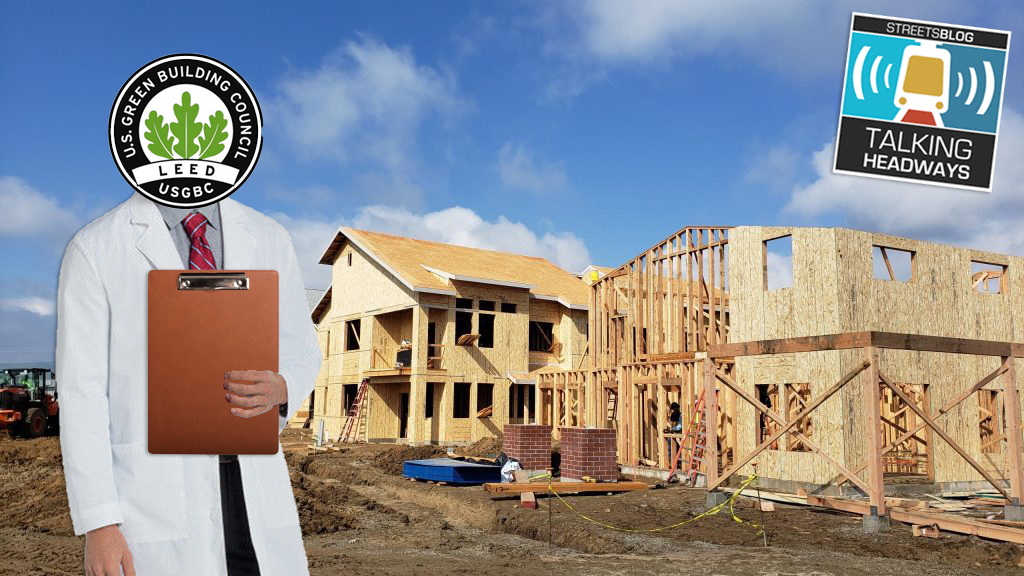This week, we’re joined by Adele Houghton of the Harvard School of Public Health and Carlos Castillo-Salgado of the Johns Hopkins Bloomberg School of Public Health to discuss their new book, Architectural Epidemiology: Architecture as a Mechanism for Designing a Healthier, More Sustainable, and Resilient World. We chat about how to architecture itself can create more healthy neighborhoods — and why it's not just checking off boxes on a LEED checklist.
Now, at Talking Headways, we want to put you in charge, so we give you three ways to enjoy our content: first, you could just click on the blue arrow in the white circle in the player below to listen. Or you could read a full unedited transcript by clicking here (but there will be some typos!). Or you could just read an edited excerpt of our conversation below the player. It's up to you!
Partial edited section:
Jeff Wood: Basically you created this book, Architectural Epidemiology, because architects and developers were not paying public health any mind. And planners can use it, too. There's so much really good information in here.
Carlos Castillo-Salgado: There is a tremendous amount of knowledge that is placed in different silos that has not been very useful to respond to the needs of the society in this century, we call the "knowledge/do gap."
We have tons of for knowledge that we don't apply particularly in public health or even architecture. We decided to bring all these connections together to recognize that the silos of climate change, of the air quality, all of those need to be bridging and already apply methodology that is offered by epidemiology we call problem solving.
Adele Houghton: So I had been doing work with the health department in the City of Austin and Travis County through my fellowship at the CDC, looking at developing environmental public health indicators that combine the vulnerability of people and the vulnerability of infrastructure and natural environments to extreme heat and flooding.
We created a social and infrastructure vulnerability index to understand where were the hot spots in the city, and then identify policies within the city of Austin to prioritize funding in areas that were both vulnerable populations and high vulnerability to extreme heat or flooding.
Then Carlos and I looked at LEED and said, "OK, LEED is in the green building rating system, which is highly used in Austin to see projects who were identifying themselves as green." Were they choosing to use the strategies in LEED that would bring the greatest co-benefits to extreme heat and flooding in neighborhoods that were highly vulnerable?
We found the exact opposite. So in fact, not only were they not emphasizing those strategies in the highly vulnerable neighborhoods, they weren't even located in those neighborhoods. They were mostly focused in the lowest vulnerability neighborhoods. We use the same approach in Chicago and found the same results.
I started presenting this work to my colleagues because I still very much identified only as an architect and a green building consultant. And people would literally gasp when I would show them the results, because they thought that what they were doing just by following the LEED checklist, which doesn't require you to do any real kind of like substantive, holistic interpretation or analysis of your neighborhood. And you know what is going to be the ripple effect of this project, whether environmentally or socially or economically, it doesn't ask you to do that.
And so people just think, "Oh, well, if I just get more points in this menu of options, I will automatically have an impact." My reaction was so visceral. I kind of woke up and thought, "You know, maybe people haven't realized that this is actually something they need to pay attention to."
Fast forward to today. It is very unusual for an architecture project to pay any attention at all outside of the property line. They pretend like they're building a spaceship that's going to land on some sort of launchpad on the moon or something, and is not going to have any kind of impact on its surroundings.
So we decided to people a method that would be flexible and problem-solving, and use tools that they're already familiar with, like the LEED rating system, but could allow them to be more strategic about it so that you're paying attention to what those ripple effects will be.






